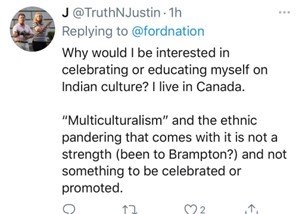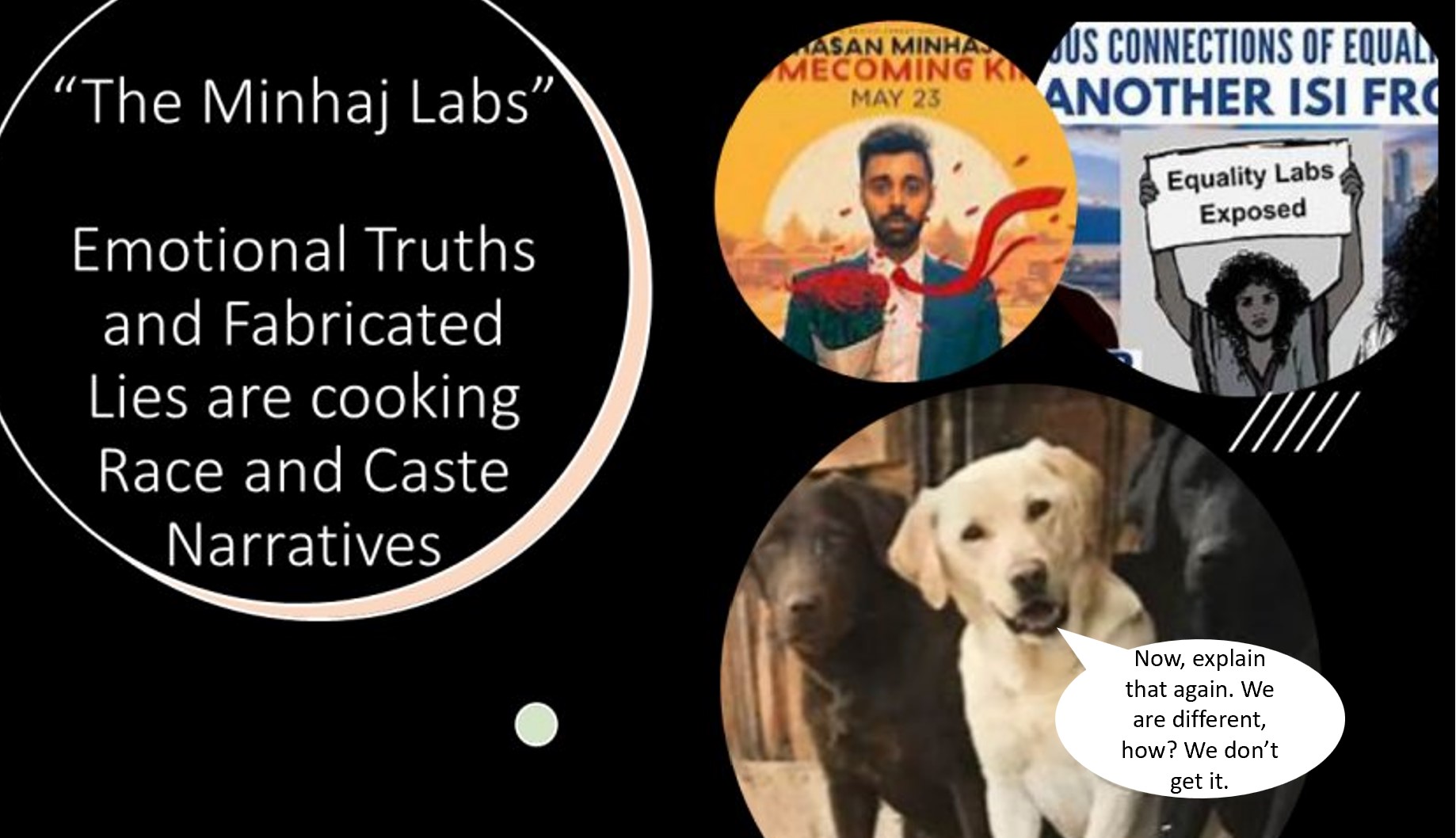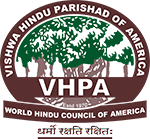Racism is a social construct created to signal the superiority of White people over non-white in order to assert unfair and unearned advantages over all spheres of life, in the social, political, and economic spheres of life. Racism is a result of both negative and positive stereotyping, which involves assigning a characteristic to a particular group of people and thereby denying them diversity. Stereotyping leads to prejudice towards Hindus.
In order to fully understand the context of the above remarks, it’s useful to understand the thinking behind such racist and prejudiced remarks. As discussed in the previous section,[1] these comments reflect the colonial and paternalistic “invalidation myths and ideologies” that were historically used against the Indigenous peoples by early European settlers to dehumanize them as ‘savages’ that needed to be either eliminated or saved. Such racist beliefs served as a platform for discrimination that led to policies initially to create a White Canada and later to create Residential schools to “kill the Indian in them,” leading to the genocide, physical and cultural, of the indigenous peoples. They continued to languish under the colonial Indian Act.
Canadian policies to address racism
Canada, as a country born out of British colonial values, had historically imbibed colonial-era racist and anti-Hindu ideology in its early laws of immigration. A ‘Whites only’ Canada policy excluded the entry of non-White immigrants into Canada until the 1950s. It resulted in the denial and persecution of immigrants from India and other racialized countries, like China, to enter or remain in Canada. One of the well-known examples of this policy is that of Komagata Maru in 1914. This Japanese ship, with 376 Indian immigrants, was denied entry and forced to return to India. In 2016, Prime Minister Trudeau offered an apology from the Canadian Govt for this racist incident.[2]
Among the other racist policies of that period included the imposition of a steep ‘head tax’ on Chinese immigrants and the internment of Japanese Canadians during WW2. Canada has made public apologies to the Chinese Canadians for the head tax and related indignities.
Hindu Canadians acknowledge that Canada has shown a commitment to addressing racism; several laws were enacted to move Canada towards becoming more inclusive. The Canadian Charter of Rights and Freedoms (1982) enshrines freedom of religion (S2) and freedom against discrimination against race, religion, color, ethnic or national origin, sex, age, and mental or physical disability (S15).[3]
These rights have been implemented through the federal and provincial statutes of the Human Rights Codes (HRC). The HRC document is widely used by school boards, Government institutions, businesses, and other organizations as a basis for developing their human rights policies and procedures.
Unfortunately, Hinduphobia in Canadian society endures even today in the form of generalized anti-immigration xenophobia and hatred. For example, in June 1985, when an Air India flight from Canada crashed midair, killing all 329 people on board, the Govt. of Canada sent condolence to the Government of India. They had presumed that the passengers, who were mostly Hindus and Sikhs, were Indian citizens. The Hindu and Sikh communities were acutely hurt to realize that due to their color, ethnic identity, and country of origin, the Canadian Govt. had assumed that they were not Canadians. Additionally, Hindus were pained that it took over 20 years for Canada to complete its investigation with only one person convicted. The Commission of Inquiry found that the tragedy could have been prevented had CSIS followed up with the warnings and leads given to it.[4]
Nevertheless, Hindus continue to live in peace in Canada. They have faith in the Canadian system and laws. In particular, the following observation made by Chief Justice McLachlin is important to Hindus:
“Canadians are privileged to live in a peaceful country. Much of our collective sense of freedom and safety comes from our community’s commitment to a few key values: democratic governance, respect for fundamental rights and the rule of law, and accommodation of difference. Our commitment to these values must be renewed on every occasion. (April 2005)”[5]
One such occasion to renew Canada’s commitment to its values of mutual respect for differences was in 2018 when the Ontario Govt declared November as Hindu Heritage Month (HHM). Some of the other provinces have made similar announcements, which have led to schools and others celebrating Hindu Heritage every November.
On May 3, 2022, Liberal MP Chandra Arya moved Motion M42 asking to proclaim November as Hindu Heritage Month across Canada. In his speech, he said “Hindu Canadians have made and continue to make a significant contribution to Canada’s socio-economic, political, and cultural heritage as doctors, scientists, engineers, lawyers, business leaders, artists, academics, government officials, elected officials, etc. From building institutions to being philanthropists, Hindu-Canadians have excelled in all services and sectors and in all walks of life.” [6]
Unfortunately, there are many Canadians who disagree with such celebrations. Denying the right of diasporic Hindus to celebrate their ethnocultural heritage or accusing diasporic Hindus of having dual loyalties are forms of Hinduphobia.
There does not seem to be any similar outrage when Irish Canadians celebrate St. Patrick’s Day, for example. On November 5, 2020, Doug Ford, Premier of Ontario, tweeted a message for Hindu Heritage Month.[7] A quick review of the many racist comments made to the Premier’s tweet indicates that Hindus in Canada continue to face racism and Hinduphobia. Here are screenshots of some of the comments, which summarize the underlying prejudice of Hinduphobia.






The false allegations that Hindus do not assimilate or that celebrating Hindu Heritage Month is divisive, or pandering to a vote bank are forms of Hinduphobia. The resulting prejudice, or negative feelings towards Hindus, as individuals or communities, can lead to the dehumanization and devaluation of Hindus as citizens. As discussed in the section ‘Hinduphobia as an Invalidation Myth’, prejudice can lead to acts of discrimination in all spheres of society, including schools, institutions, workplaces, media, entertainment, and so on. Such prejudice can become deeply ingrained and lay a foundation for individual, systemic, and institutional racism.
Read Part 8: Hinduphobia in the Media
Citations
- Please see Part 2
- https://www.thecanadianencyclopedia.ca/en/article/komagata-maru
- https://laws-lois.justice.gc.ca/eng/const/page-15.html
- https://www.publicsafety.gc.ca/cnt/ntnl-scrt/cntr-trrrsm/r-nd-flght-182/index-en.aspx
- https://www.theglobeandmail.com/opinion/chief-justice-mclachlin-the-supreme-courts-steady-hand/article35296815/
- https://www.hindustantimes.com/world-news/canada-indo-canadian-mp-moves-motion-in-parl-to-mark-nov-as-hindu-heritage-month-101651569455554.html
- https://twitter.com/fordnation/status/1325249996770390016?lang=en
Go directly to specific parts of this series
- Part 1: Hinduphobia in Ontario and Canada – Introduction
- Part 2: Why HRC does not fully address the problem of Hinduphobia
- Part 3: What is Hinduphobia?
- Part 4: A Theoretical framework to understand Hinduphobia
- Part 5: Generalized Hinduphobia
- Part 6: Appropriation and lack of acknowledgment of positive contributions of Hindu civilization
- Part 7: Canada’s White Only History policy: overcoming a legacy of Racism
- Part 8: Hinduphobia in the Media
- Part 9: Hinduphobia in Academia/Universities
- Part 10: Examples of Hinduphobic Incidents in Canada







